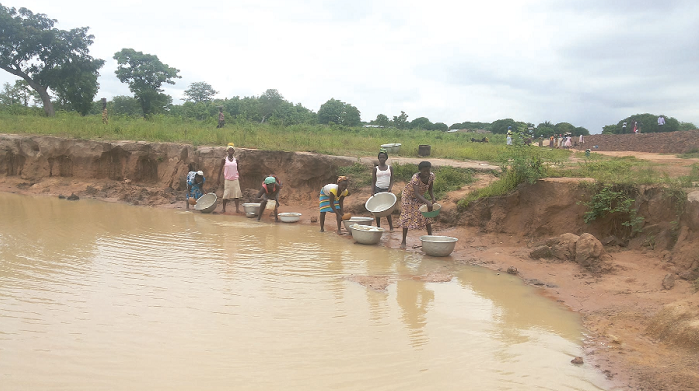
If water is life, then Lamina community is dead
Water, they say, is life. Therefore, access to clean water means an improvement in the quality of life of a people.
Advertisement
But for the residents of Lamina, a farming community in the Nkwanta-North District in the Volta Region, it is as daunting a task to access this valuable resource as it is for the Biblical camel to go through the hole of a needle.
As a result of the water crisis in the area, residents walk for at least five kilometres to the nearest stream to get water.
What matters to them is not the fact that the reliance on the surface water sources in neighbouring communities, which contain life-threatening parasites and micro organisms, could expose them to health risks. Rather, the rare opportunity to get water, in whatever state, is fulfilling. They begin to thank their stars any time the clouds gather because it presents the opportunity to collect rain water into their earthenware pots, which could last for days.
About Lamina
Located in the North-Western part, 30-minute drive from Kpassa, the capital of the Nkwanta-North District in the Volta Region, is Lamina, a community of about 700 residents.
The residents of this community are predominantly food crop farmers. Among the crops they grow are yam, cassava, maize, groundnut and guinea corn. Some of the residents also keep cattle, goats, sheep and other traditional animals, though not on a commercial scale.
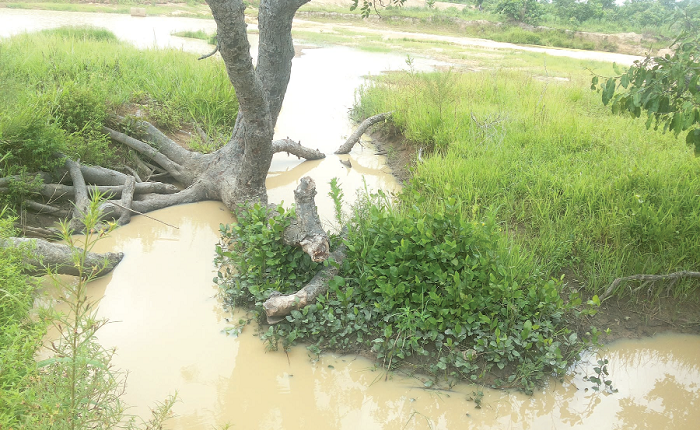
Apart from the school block and the recently constructed Community Health and Planning Services (CHIP) compound, most other structures in the area are made of mud and roofed with corrugated iron sheet with a few mud houses roofed with thatch.
Visit to the Lamina community
I was privileged to be part of a team from the Nkwanta-North District Assembly (NNDA) that visited the community a month ago to assess the impact of the dam project initiated by the Ghana Social Opportunities Project (GSOP).
The team was led by the District Chief Executive (DCE) of the area, Mr Martin Kudor.
When we got there, it was already 2 p.m. Some of the residents, who had worked all day on the dam project, were relaxing under a shady mango tree, while others were seen going about one activity or another.
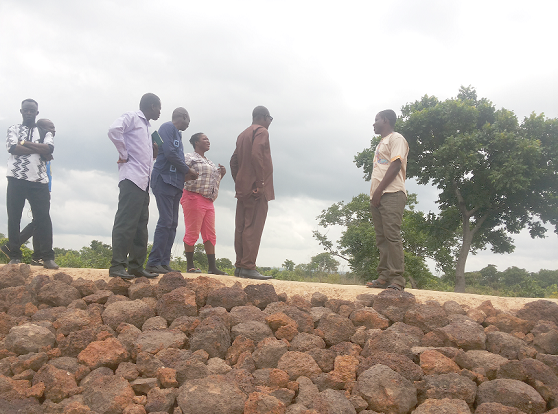
Mr Martin Kudor (2nd right), the DCE of Nkwanta-North, with other members of the assembly inspectioning the site
If it was not hunting for stones in the bushes, it was arranging the stones on the platform that had been raised to serve as an embankment. If it was not digging up the soil, it was carrying the dugout soil to the site for embankment. Everybody – the old, the young; male and female, was doing something to ensure that their dream of getting water was achieved.
Some women from the community could be seen fetching the milky-brown and muddy water that had accumulated in the dam from the previous rain for their domestic activities such as cooking, drinking and washing.
The effects
The residents of Lamina are among some 10 million Ghanaians and 650 million people in the world who do not have access to clean and safe water which is one of the critical Sustainable Development Goals (SDGs).
Meanwhile, the recent World Health Organisation (WHO) report shows that more than two million people die annually from unsafe water, sanitation and hygiene related diseases. What this means is that countries are deprived of their labour force whose input could have increased productivity.
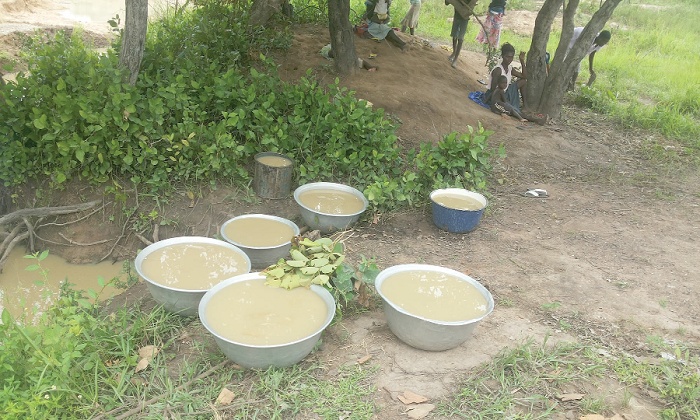
Samples of the milky-brown water
At a ceremony to inaugurate US$8.5 million water project at Navrongo in the Upper East Region in July, this year, President John Mahama indicated that the country had a target to improve universal access to water by 2025 and increase access to potable water to 109.7 million gallons per day by the end of 2016.
Are the residents of Lamina and other deprived communities part of this plan? How long will they continue to yearn for potable water?
A dark cloud hangs over the future of the children in this community as they spend a chunk of the instructional time in school searching for water.
Efforts to get water
GSOP, an initiative to create employment opportunities and to enhance the welfare of citizens, rolled out a support programme for Metropolitan, Municipal and District Assemblies (MMDAs) across the country.
The programme which is currently operational in 60 MMDAs, is aimed at boosting the capacity of the MMDAs to deliver quality development services to local communities.
The extent of poverty and deprivation of district assemblies form the basis for selection of beneficiary districts.
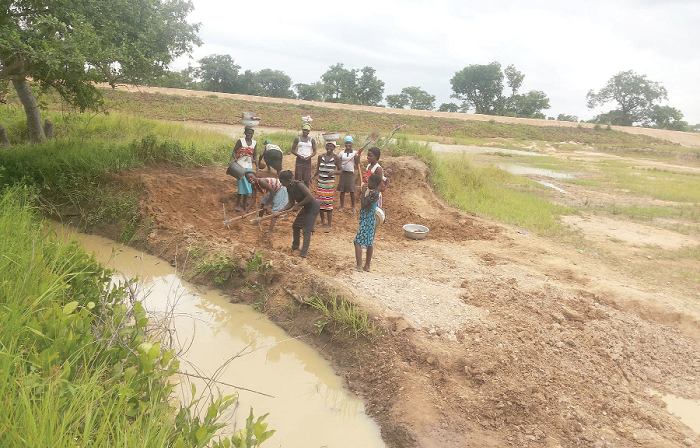
When the Nkwanta-North District was selected among the 18 beneficiaries of the GSOP initiative in the Volta Region in 2013, one critical area of interest had to do with solving the water crisis of Lamina.
Work on the artificial dam began in 2014. The Supervisor of the project, Hajia Zakiah Salamatu, explained to me that the target of the project was to store rain water for a longer period.
“You can see that we are filling the banks of the dam with stones. We want to prevent waste material from getting into the dam so that we can have clean water,” she said.
Conclusion
Based on what I saw at the Lamina community, it is crystal clear that the country still has a daunting task to be able to achieve universal access to potable water. More resources must be committed to provide quality water for all, especially rural communities. Effective Public Private Partnerships (PPP) and strengthening MMDAs should be encouraged to efficiently invest in water resources.



